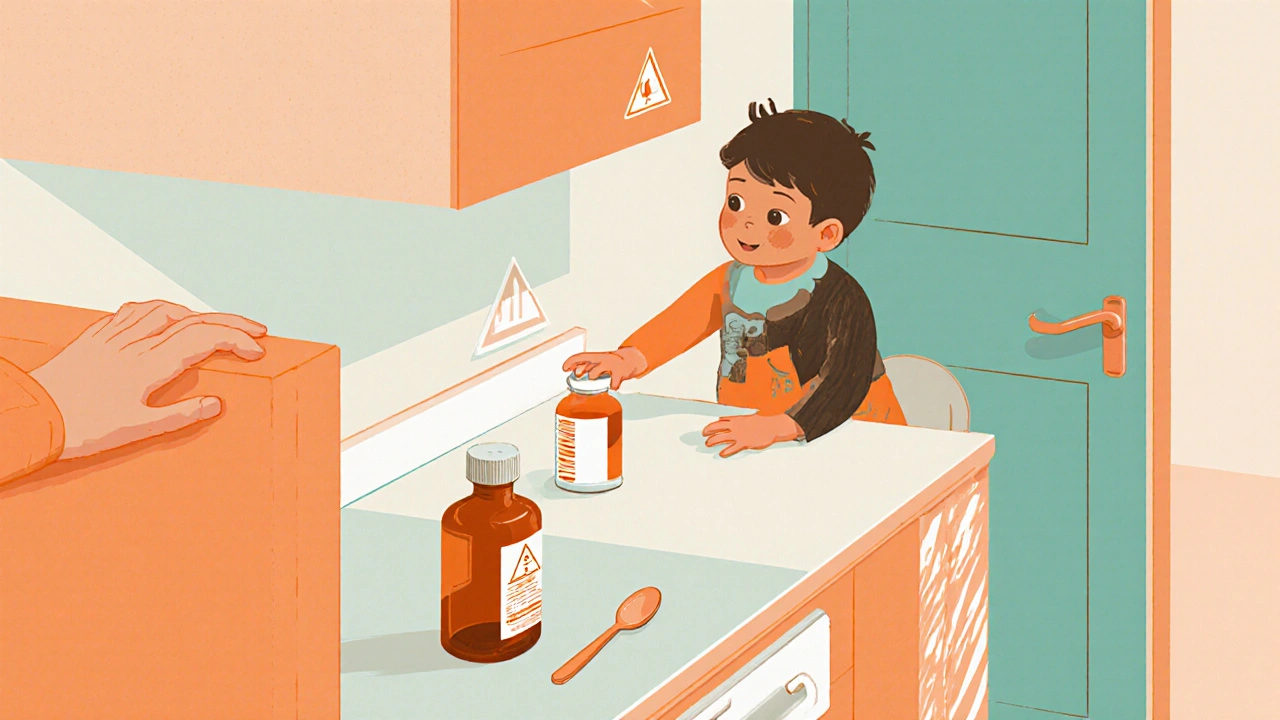Pediatric Poisoning Prevention: How to Keep Kids Safe from Household Hazards
When it comes to pediatric poisoning prevention, the proactive steps families take to stop children from accidentally ingesting harmful substances. Also known as child poison safety, it’s not just about locking up meds—it’s about understanding what’s truly risky in your home and how to respond fast. Every year, over 1 million children under six end up in emergency rooms because of accidental poisonings. Most of these aren’t from strangers or scary chemicals—they’re from things you keep right under your sink, on your nightstand, or in the bathroom cabinet.
household toxins, common items like cleaning supplies, vitamins, cosmetics, and over-the-counter drugs that can be deadly in small amounts to kids are the top culprits. A single pill of adult painkiller, a sip of laundry detergent, or a handful of gummy vitamins can cause serious harm. Kids don’t understand danger—they see color, smell sweetness, and reach. That’s why accidental ingestion, the unintentional swallowing of harmful substances by children happens so often. It’s not neglect. It’s human nature. And that’s why prevention isn’t about being perfect—it’s about making it hard for a curious toddler to get to the danger.
Simple fixes work. Locking cabinets with childproof latches, keeping meds in high, locked containers, and never leaving pills on the counter—even for a second—cut risk dramatically. But you also need to know what’s most dangerous. Iron supplements, blood pressure pills, and antidepressants are among the top killers in young kids. Even topical creams like lidocaine or nicotine patches can be deadly if licked or chewed. And don’t forget the plants on your windowsill or the mothballs in the closet—some of the most common poisonings come from things you think are harmless.
When a child swallows something risky, time matters. Don’t wait for symptoms. Don’t try to make them throw up. Call poison control immediately. In the U.S., it’s 1-800-222-1222. Save it in your phone. Post it on the fridge. Know it by heart. Most poisonings can be managed at home if you act fast. But delays cost lives.
This collection of posts doesn’t just talk about poisoning—it shows you what’s really out there. From how antidepressants like bupropion can be dangerous if a child finds them, to why mixing alcohol with antipsychotics like risperidone is a nightmare for adults (and even scarier if a kid gets into it), the risks are real. You’ll find clear advice on how to store medications safely, what to do when a child swallows something, and how to spot the early signs of toxicity. You’ll also see how common supplements and even pet meds can turn into hidden threats. These aren’t hypotheticals. These are stories from real families who learned the hard way.
There’s no magic solution. But there are simple, proven steps that work. You don’t need to live in a sterile bubble. You just need to be smart, prepared, and a little bit paranoid—because when it comes to your child’s safety, that’s not paranoia. That’s love.

Pediatric Medication Safety: What Parents and Providers Need to Know Today
Pediatric medication errors are far more common than most people realize-and often deadly. Learn the top risks, what hospitals are doing to prevent them, and exactly what parents need to do at home to keep kids safe.
Read More